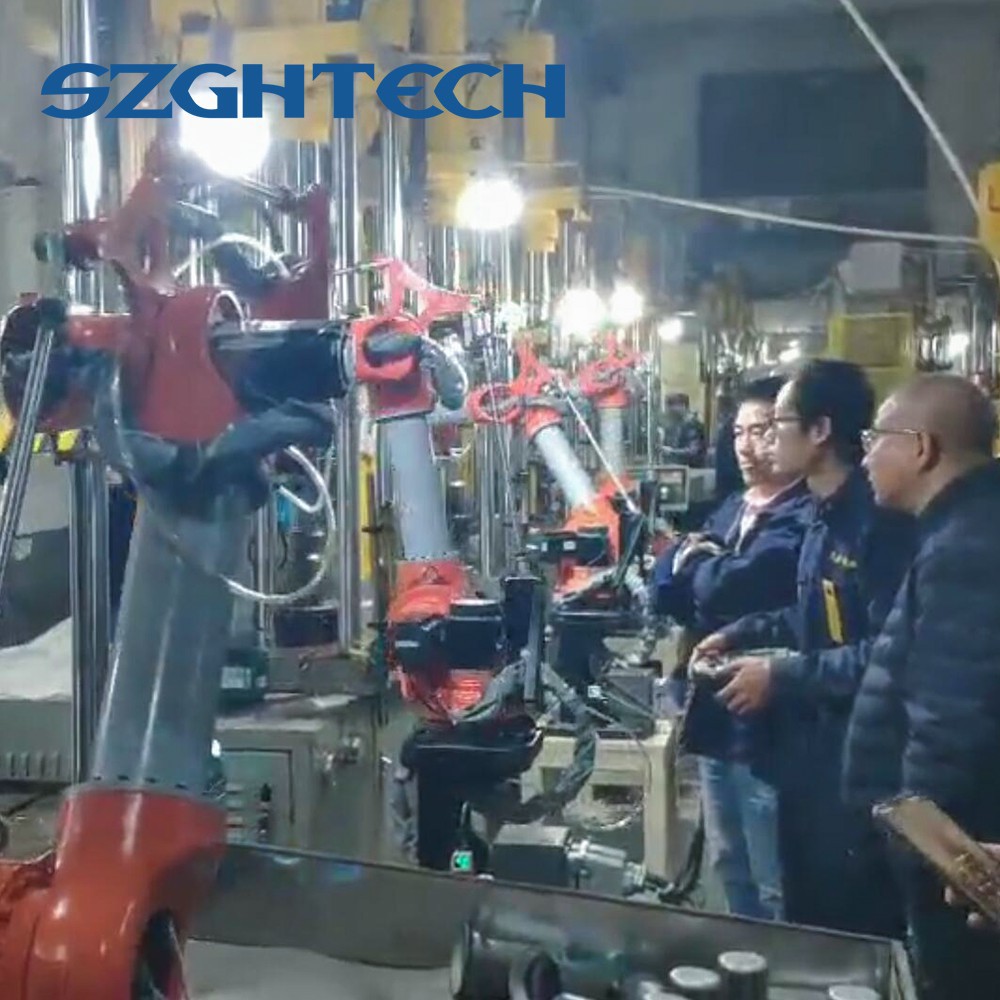Industrial robotic arms can significantly improve production line efficiency in several ways:
1) Automation: Industrial robotic arms can perform repetitive and monotonous tasks with high precision and speed, reducing the risk of human error and improving product consistency. This can result in higher production output and fewer defects, thereby improving overall production line efficiency.
2) Flexibility: Industrial robotic arms can be programmed to perform various tasks and adapt to different product configurations, making them highly flexible. They can easily switch between tasks, adjust to changes in production requirements, and operate 24/7 without breaks, leading to increased production uptime and faster product changeovers, which can improve production line efficiency.
3) Cycle time reduction: Industrial robotic arms can perform tasks at a faster pace compared to human workers, reducing cycle times and increasing production throughput. They can also perform tasks simultaneously, such as picking and placing multiple objects, leading to shorter production cycles and higher productivity.
4) Precision and accuracy: Industrial robotic arms can perform tasks with high precision and accuracy, leading to reduced scrap, rework, and waste. This can result in improved product quality and yield, reducing production costs and improving overall production line efficiency.
5) Safety: Industrial robotic arms can work in hazardous or dangerous environments, eliminating the need for human workers to perform risky tasks. This can lead to improved worker safety and reduce the risk of workplace accidents, resulting in fewer production delays and disruptions.
6) Data collection and analysis: Industrial robotic arms can be integrated with sensors and other data collection devices, allowing for real-time data monitoring and analysis. This data can be used to optimize production processes, identify bottlenecks, and make data-driven decisions for process improvement, leading to increased production line efficiency.
7) Collaborative robotics: Industrial robotic arms can work alongside human workers in a collaborative manner, known as cobots. Cobots can assist human workers in tasks that require heavy lifting or precise movements, improving overall productivity and reducing worker fatigue. This can result in improved efficiency and productivity on the production line.

In summary, industrial robotic arms can improve production line efficiency through automation, flexibility, cycle time reduction, precision and accuracy, safety, data collection and analysis, and collaborative robotics. By leveraging the capabilities of robotic arms, manufacturers can optimize their production processes, increase productivity, and achieve higher levels of efficiency in their operations.

